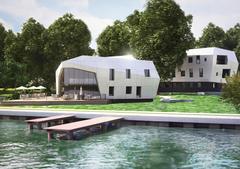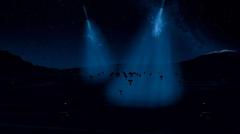URL: https://www.desy.de/news/news_search/index_eng.html
Breadcrumb Navigation
DESY News: Scientific centre of CTA observatory coming to Germany
News
News from the DESY research centre
Scientific centre of CTA observatory coming to Germany
A major international project in gamma-ray astronomy, the Cherenkov Telescope Array (CTA), has taken another important step towards becoming a reality. At today’s meeting in Munich, the shareholders’ meeting of the company CTAO GmbH decided that the Science Data Management Centre and the seat of the CTA Scientific Director should be located at the DESY research centre in Zeuthen. At the same time, it decided that the administrative headquarters of the CTA organisation would be in Bologna, Italy. “We are very pleased that we have won the international bid and managed to bring the scientific coordination of CTA to Germany,” says Beatrix Vierkorn-Rudolph of Germany’s Ministry of Education and Research, who is the deputy chairperson of the CTAO’s shareholders’ meeting.

Architectural rendering of the building for the scientific centre of CTA on the DESY campus in Zeuthen (Dahm Architekten & Ingenieure, Berlin).
“Germany has a long and successful tradition in the field of gamma-ray astronomy, which we can put to excellent use in the scientific coordination of CTA,” explains Werner Hofmann of the Max Planck Institute for Nuclear Physics in Heidelberg, who is spokesman for the international CTA Consortium and founding director of CTAO GmbH. “CTA is going to revolutionise this field of astronomy. We are expecting CTA to provide profound insights into the role of high-energy processes in the development of the universe and many scientific surprises.”

Artist´s view of two particle showers hitting the array of CTA telescopes (picture: DESY/Milde Science Comm.).
“This is a great day for German astroparticle physics, and also for the Zeuthen region as a whole,” says Christian Stegmann, head of DESY’s Zeuthen site. “The decision will be a long-term incentive for the Berlin-Brandenburg region, which is already firmly established in the field of astronomy and astrophysics in Germany. We would like to thank CTAO GmbH for the trust it is placing in DESY.”
A new building is to be erected for the Science Data Management Centre at the DESY Campus on Lake Zeuthen. It will operate in close coordination with the existing centre, making use of available synergies. “Before long, the excavators will be arriving at the DESY Campus in Zeuthen, and further down the line the CTA researchers at Lake Zeuthen will use gamma radiation to study how, deep inside the universe, shock waves from huge stellar explosions plough their way through our Milky Way,” remarks Stegmann, “or how matter is carried off by huge maelstroms in the neighbourhood of black holes.”



